We Are ISU: Snapshots of Student Life
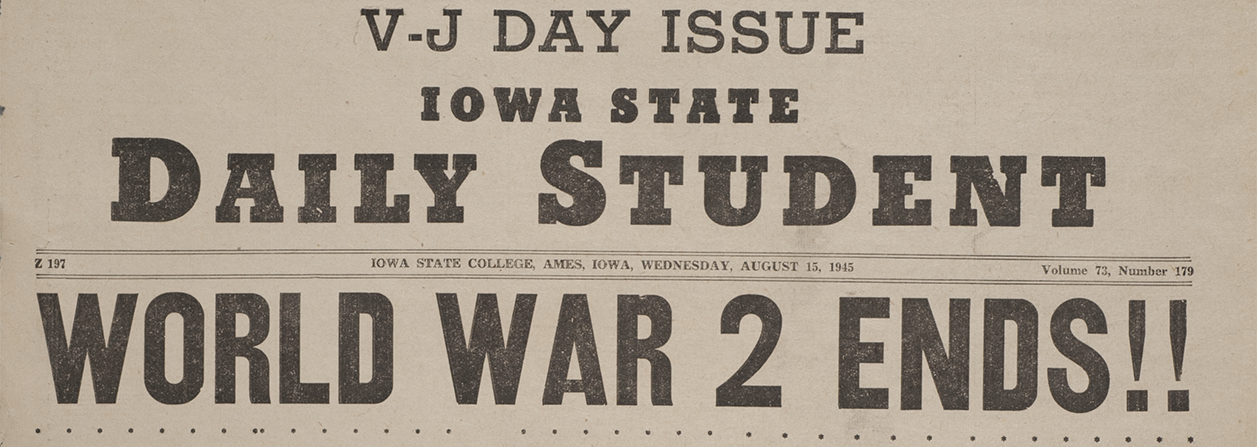
Feast or Famine (1929-1958)
These decades saw the greatest fluctuation in enrollment numbers in ISU history. From 1929 until 1944, when Lorris Foster arrived on campus, the headcount dropped nearly by half from 4,171 to 2,436. Her undergraduate years, a brief period at the end of World War II, is also the only time to date that women students have outnumbered the men. Then, with the end of the war and the introduction of the GI bill, the total enrollment skyrocketed to as many as 10,114 in the late 1940s and 1950s. Enrollment has been on an upward trend ever since.
Student Spotlight: Lorris Foster, student from 1943 to 1947
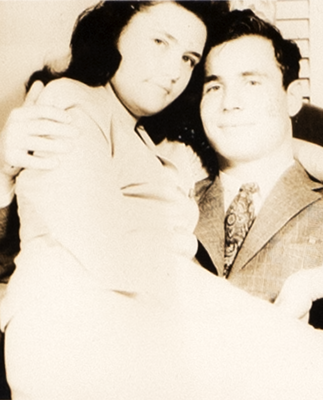
Lorris Ann Foster’s college experience was shaped by and around the tail end of World War II. Hailing from Detroit, Michigan, she reflecteda typical ISU student for her day: white, middle class, Midwestern, and female. She was socially very active, going on trips and outings with friends, participating in the Collegiate Presbyterian Church, and joining a sorority, Alpha Gamma Delta.
While there was an increase in the number of ISU women studying STEM subjects at ISU during this period, and a number of these women (including U.S. Navy weather forecaster Beatrice Bruner Dowd, class of ‘41, and later-famous nuclear chemist Darleane Hoffman, class of ‘48) went on achieve great success in STEM professions, the majority of women college students from Lorris’s day leaned towards liberal arts and Home Economics majors. Lorris’s own interests lay in Child Development, a field of study currently known as Human Development and Family Studies.
Like many of her contemporaries, Lorris married shortly after graduation. Curiously, her married name was also “Foster,” which means that her “official” name in our archival records renders her “Lorris A. Foster Foster.”
Snapshot of Campus in 1947:
- President: Charles E. Friley
- Student Population: 9,700
- New Campus Buildings: Snedecor Hall (1939), Forker Building (1940), Hamilton Hall (1940), Pammel Court (1945), 15 Temporary Buildings (1947)
Residential Life
![Image of Foster's registration forms, including a notice about ration book availability][Image of Foster's registration forms, including a notice about ration book availability](/sites/default/files/images/WeAreISU/LandingPage/RS2107147b001i005.png)
Registration and Ration Notice
Lorris, like other women students of her era, would have lived under the authority of a dorm “housemother,” who enforced strict gender-discriminating University regulations governing where, when, and with whom she was allowed to be, both on campus and off.
Permission to leave Ames, even for a day-trip, required written approval from both the woman’s parents and her residence hall director. After 1935, women’s parents were even “requested to write to the hall director giving their permission for their daughters to ride in automobiles” prior to registration1. Indeed, the registration forms themselves were addressed to the woman’s parents, not to her. These forms seemed to operate under an assumption that the parents, and not the adult student, were entitled to make choices about the way she lived her life.
During World War II necessity, as well as tradition, imposed regulations on students’ lives in the form of ration books.While the agricultural economy in Iowa fared better than other parts of the country during World War II2, much of the produce was shipped elsewhere, and the state was still subject to federal rationing. Lorris would have used ration coupons to obtain any kind of food stuff that wasn’t dairy or eggs until her sophomore year, and she would have continued using them to purchase sugar or alcohol until she graduated3.
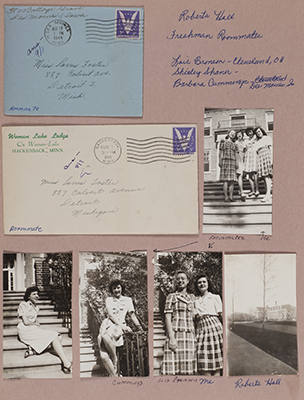
Roommates
Lorris corresponded with her freshman roommates via handwritten letters before she met them in person, much as students today do via email, Skype, or Facebook groups.
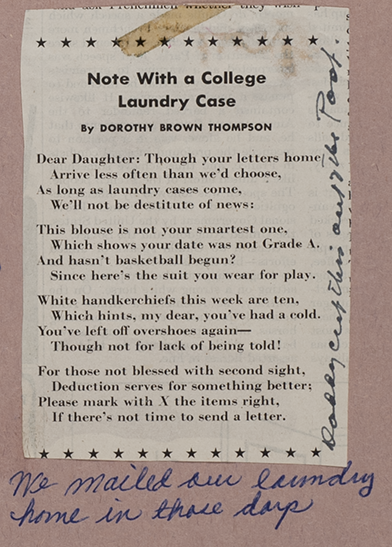
Mailing Laundry Home
Laundry is an over-present burden in a student's day-to-day life, but means of coping with it have changed. Dorms of the 1930s and '40s did not contain coin-operated laundry machines. Rather than saving up laundry to haul home over the breaks, then, students regularly mailed it to their parents and received clean, folded clothes in return.
The artifact collection in the ISU archives contains a laundry mailer from this time period, which can be viewed in the physical exhibit and on the Cardinal Tales blog here.
Academics

Freshman Orientation
The “Freshman Days” program was established in 1929. When Lorris went through the program in the ‘40s, she would have taken both a psychological evaluation and an English Department placement exam. Additionally, she would have received information about campus layout and codes of conduct4.
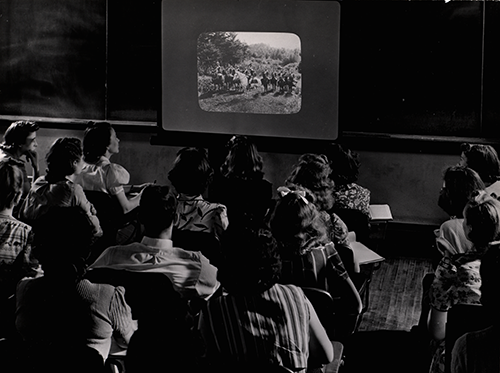
Classroom Technology: Slide Projector
The concept of image projection was hardly new at this point, as lantern slides had been around since the 17thcentury. However, lantern slides were not typically used in classroom settings, and standard 35 mm film, used in slide carousels, was not invented until 1935. After this point, though, use of audiovisual technology in education became commonplace almost at once5.

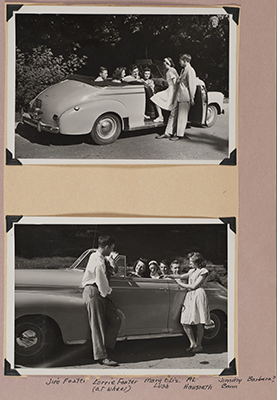
Driver Education
Many Midwestern states had only recently mandated vehicle registration and driver licensing when Lorris went to college. So the driver’s education program she attended, jointly sponsored through ISU and the state, was relatively new. Prior to this, lectures on traffic safety had simply been incorporated into more generic high school, or even elementary school, curriculums with no consistent methodology. It took time for accredited courses to follow6.
Social Life
Iowa State College Campus Scenes, 1938
While they were filmed a few years before Lorris arrived on campus, these "campus scenes" depict a world in which she would have felt at home.
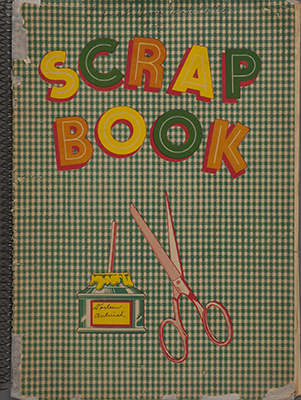
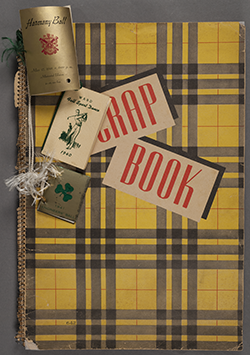
Keeping a Scrapbook
Scrapbooking was a common pastime for students in the 1940s and ‘50s, especially amongst women in the Home Economics programs. We have many examples in the archives here. The scrapbooks pictured belonged to another ISU student named Dorleene E. Aulerich Witt, who attended ISU after Lorris.
The covers represent the kinds of notebooks Foster would have seen for sale in stores and may originally have used.
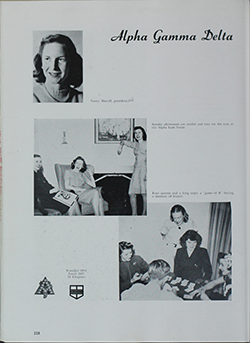
Sorority Involvement
Lorris joined the Alpha Gamma Delta's ISU chapter (the Rho chapter) in her sophomore year. She was active in the sorority throughout the rest of her time at ISU and lived in the fraternity house after her initiation.
The Rho Chapter of Alpha Gamma Delta was founded at ISU in 1917, around a decade after the sorority was born at Syracuse University in New York. Current record holdings for Alpha Gamma Delta are scant in the ISU archives, but this spread in the 1947 Bomb yearbook includes a group shot in which Lorris appears (top row, second from the right) (1947 Bomb, pgs. 226-227).
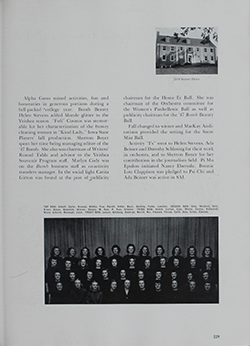
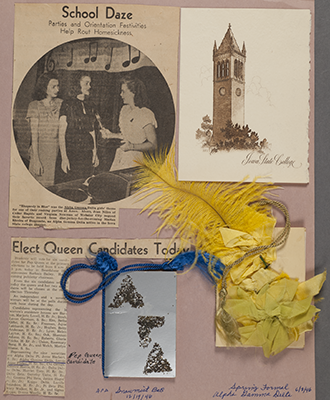
Social Calendar
Lorris's scrapbook testifies that she led an active social life. This particular page features examples of dance cards and invitations. Other sections of the scrapbook allude to themed events and celebrations, particularly “Five Pound Parties” for sorority sisters and friends back home who had recently become engaged.
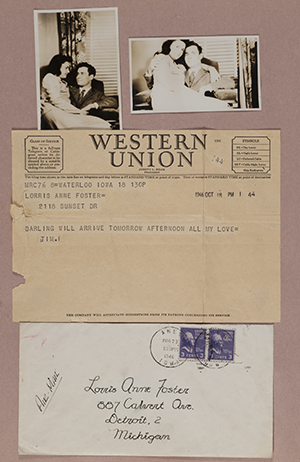
Telegram from Her Sweetheart
Long-distance relationships must have been more challenging in an era before smart phones, social media, and video conferencing. But the two Foster-Fosters seem to have made it work. Lorris’s boyfriend (and later husband), Jim Foster, a Civil Engineering student one year ahead of Lorris at Iowa State, sent her notes and telegrams after he graduated, and Lorris carefully preserved these in dedicated portions of her scrapbook.
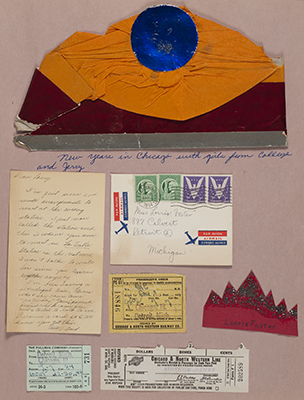
Holiday Roadtrip
In addition to on-campus social activities, Lorris and her friends found ways to carry on their merry-making over breaks. On this page of her scrapbook, she records a New Year's Eve they celebrated together in Chicago.
The War
Naval Cadets at Iowa State College
World War II disrupted every-day life on campus in countless ways. One of the most visible reminders included the presence of naval cadets living and training on the grounds. In 1943, the year Lorris entered ISU as a freshmen, the cadets had begun to take up so much space on campus that several women students had to move into men's fraternity houses in order to make room for military personnel in the dorms.
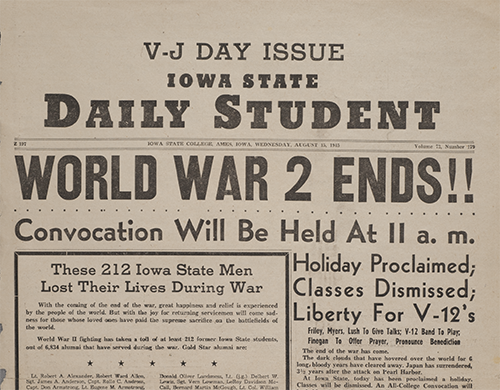
V-J Day Headlines, Iowa State Daily Student
On V-J Day, the day of Japanese surrender in 1945, The Iowa State Daily Student(now known as Iowa State Daily) published a special issue full of headlines that spoke to the war’s impact on the Iowa State community.